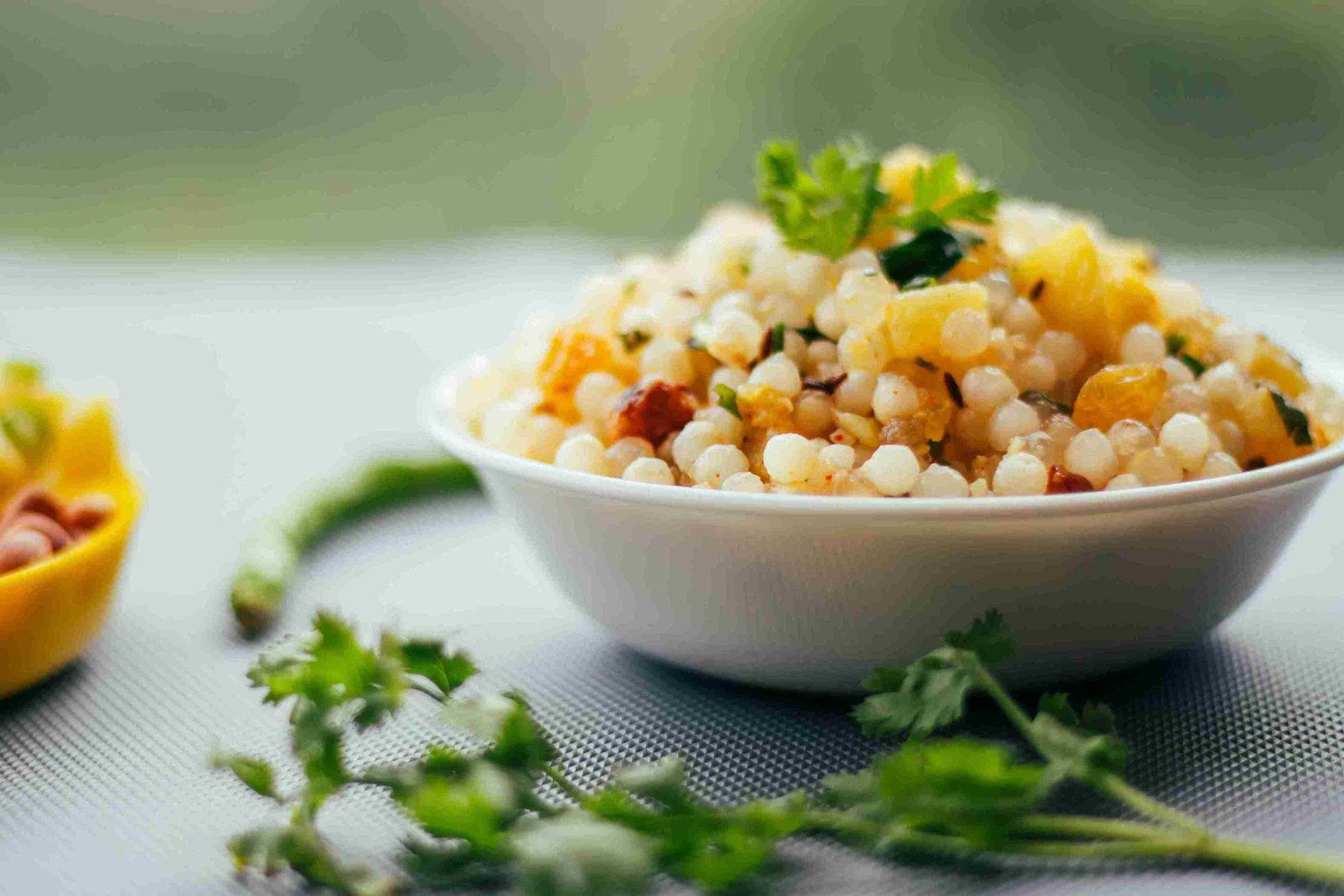
Commonly referred to as tapioca pearls, Sabudana, as it is commonly known in everyday language, is an ingredient also used very often in Indian homes: to be used during fasting, during festive meals, or as a snack. Sabudana is starch extracted from the cassava root which is a high-energy and easy-to-digest food. The primary dishes or snacks prepared with sabudana include sabudana khichadi, sabudana vada, and sabudana kheer but there is no nutritional significance when it comes to sabudana it came into modern food culture for that very reason.
So in this post, we will find out sabudana nutritional information, sabudana benefits for people doing weight loss, and the glycemic index and how the same properties make it a healthier option for people with diabetes and a few cons that might trouble some people. With a special focus on the sabudana khichadi nutrition benefits
Sabudana is a rich source of carbohydrates, with a 100-gram serving providing approximately:
The sabudana nutrition chart revealed a high concentration of carbohydrates, making this gourmet dish ideal for an instant energy booster. While it is this calorie and carbohydrate nutritive value that makes it a food of choice for breaking-the-fast days or quick energy during meals, this food needs to be supplemented with protein and dietary fibers from other sources in these circumstances.
Its only versatility is evident from the fact that can be soaked, boiled, fried, or even used to make puddings. Often had as a part of regular or fasting meals in many Indian states, is also a rich source of carbohydrates.
Therefore, it appears at first glance that sabudana is not the best food that one should eat while on the regime of weight loss, although it has much energy value and carbohydrates. But once again herein lies moderation and moderate consumption of sabudana, which makes it one of the foods to include in your weight loss diet plan.
Sabudana is a good energy source; hence, it can prove beneficial in one way or another to those engaged in regular physical activity. The high carbohydrate count fuels another’s ability, especially during workouts or physically demanding tasks. But for sabudana to be used in weight loss, there are a few strategies:
In other words, it is not unbefitting to note that eating sabudana for weight loss is a god-sent if only some extra good ingredients are added to it then its portion size should be limited.
Moreover, the GI should be considered for diabetic patients and it stands for glycemic index Sabudana . Glycemic index is the extent by which a specific food contributes to that rise in blood glucose level compared to a stocking amount of glucose.
Tapioca starch is quite starchy and has a high glycaemic index range of 65-85 which is a culprit for a sharp rise in blood sugar levels. This is specifically because sabudana is made up of simple carbohydrates which do not take long to be metabolized in the body. Due to its glycemic index Stat, tapioca is a tricky choice for diabetics. On this note, it would be wise to:
Sabudana is not completely off-limits to those who have diabetes.
Regular consumption of sabudana might result in frequent high blood sugar levels.
The KEY is moderation.
Controlled portions will only cause a moderate increase in blood sugar along with pairing it with enough fibre to control the blood sugar spike
Here is the nutritional breakdown:
Sabudana khichadi is very high in carbohydrates; mixing it with peanuts and adding vegetables and spices helps create more balance in the dish. Peanuts provide protein and beneficial fat, while vegetables contribute fiber and vitamins. This is a better choice compared with fried or sugar-loaded preparations like sabudana vada or sabudana kheer.
Sabudana is a calorie rice that has become an excellent food for foragers during fasting periods as well as rigorous exercises. However, because it contains high GI and carbohydrate, one should be careful with consumption especially where one wants to lose weight or have diabetes. It offers other pros and cons such as weight gain combined with lower nutritional factors. But sabudana can still be an aid in a balanced diet with appropriate accompaniments.
Making sabudana fit into your meals, in a practical, balanced fashion, means that you enjoy the benefits without the drawbacks, whether you play with a comforting bowl of sabudana khichadi or try healthier variations on this traditional ingredient.
Yes, but only in small amounts. It’s mainly a source of quick energy from starch. You’ll also find traces of minerals like calcium and potassium, plus a little iron, but nothing close to a full nutrient package.
If you mix it with vegetables, a handful of roasted peanuts, or yogurt, you’ll get more protein and fiber. This helps you feel full for longer and keeps the dish from being just a pile of carbs.
It can be—if you watch portions. Since it’s calorie-heavy, go easy on the quantity and avoid frying. Steaming or lightly cooking it with greens is a better choice.
They can, but carefully. Sabudana raises blood sugar quickly, so pairing it with protein or fiber is a good idea. And it’s best to keep the portion small.
Overdoing it can lead to weight gain or constipation because it’s low in fiber. Fried versions are even less healthy, adding extra fat without much nutrition.
I’d love to learn more about you and how we can work together to get our healthy meals on the table.